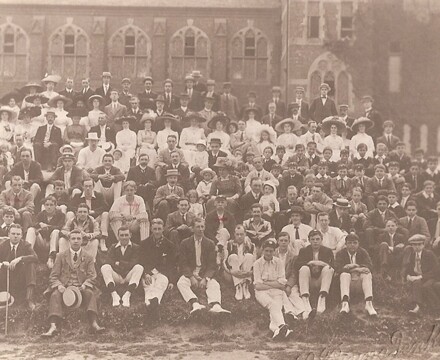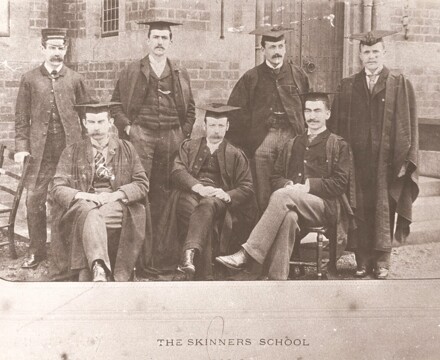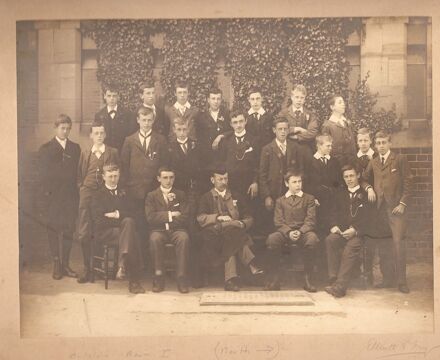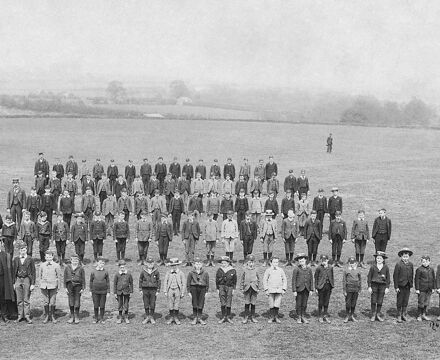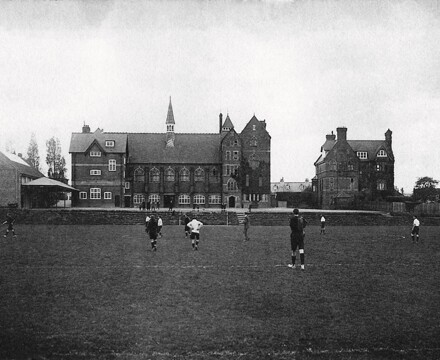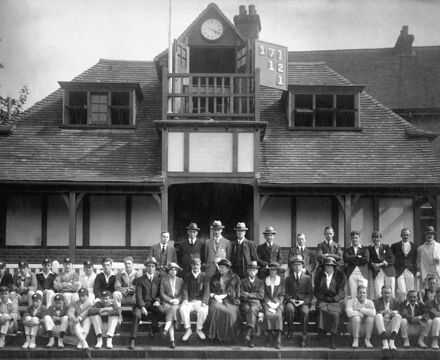- Home
- About Us
- History & Archive
History & Archive
Although only 135 years old, Skinners’ is connected to the distinguished London Livery Company of the same name, which goes back to the fourteenth century. Nowadays, members of the Company pursue all sorts of professions but in the middle ages The Skinners' Company regulated London’s fur trade. Members of the company made hazardous voyages to Russia and Scandinavia to buy furs.
The Skinners were proud of their seniority in the City – perhaps, indeed, too proud, for in 1483 their rivalry with The Merchant Taylors Company reached such a level of ferocity that a violent fight between the two companies took place. Lord Mayor Billesdon arbitrated between the warring Companies, decreeing that they should rotate annually between sixth and seventh in order of precedence in the City’s processions, and that annually each company should hold ‘an open dinner’ at which it would feast its former rivals.
Needless to say, the companies have complied with his decree ever since, and the English language acquired a new phrase, “being at sixes and sevens” describing the confusion in status which existed between the two companies.
Sir Andrew Judd (Lord Mayor of London in 1550) and six times Master of the Skinners’ Company, founded “Sir Andrew Judd’s free school” in Tonbridge – which is the modern Tonbridge School. In Victorian times the Headmaster of Tonbridge accepted increasing numbers of fee paying boarders, so squeezing out boys who lived locally.
Prompted by the Endowed Schools Commisioners, the Court of the Skinners’ Company, as Governors of Tonbridge School, responded by deciding to start another school. The sons of artisans had received limited education as a result of the 1870 Forster Education Act: now the needs of the middle classes should be met.
A prolonged row ensued between the ancient town of Tonbridge, and the hated, raffish, and upstart daughter town of Tunbridge Wells, as to the site of the new school. Eventually, in 1886, the corner site off St John’s Road was chosen and the Company endowed our new school to be made of High Brooms brick. Sadly, the Master of Works was killed during the construction, but the school nevertheless opened its doors to 53 pupils in September 1887, the Reverend Frederick Knott urging each one to “do his best”. Tough country lads walked up to six miles into school, and Tunbridge Wells tradesmen were satisfied. The citizens of Tonbridge, however, were furious at the neglect of their sons’ needs. So the company agreed to found another new school – Sir Andrew Judd’s Commercial School – out of the Andrew Judd foundation, in 1888. Finally, the Company responded to the growing clamour to educate girls by founding The Skinners’ Girls School in Hackney in the mid 1890s.
The Skinners’ School quickly established its curriculum based on the classics, and permitted the boys a half holiday on Saturdays. They enthusiastically took up soccer, wearing black shirts with red sleeves (school colours ever since) and playing on the scrubland (now Southborough) between Tonbridge and Tunbridge Wells. In 1891 they defeated new opponents, Judd’s Commercial School, by seven goals to one, so inaugurating a tradition of friendly sporting rivalry which has persisted ever since.
At the outbreak of the First World War, Skinners’ boys, like those of so many schools, flocked to the colours. Pupils still at school made tobacco pouches which were sent as presents to serving Old Skinners’ at the front in Flanders, and one of the letters of thanks, published in the 1915 school magazine, contains a first hand account of the 1914 Christmas Truce. The School’s Cadet Force was already by then well established, and it has recently celebrated its centenary. It would parade regularly, and the duties of the Sergeant Major included conducting the entire school in P.E.
In the 1930’s, plans developed to move Skinners' from our cramped corner site to the playing field at Southfields Park. The Second World War put paid to that, and indeed the old building in St John’s Road played host to the evacuated Colfe’s School from Lewisham; Skinners’ boys were taught in the mornings, Colfe’s in the afternoons. In September 2003, evacuated Old Colfians held a reunion here and we were pleased to welcome them back, though disconcerted to hear stories of the blocked up air raid shelters, which allegedly still exist on the school site.
Since the construction of the original school buildings in 1887, further building has taken place in order to accommodate the current school roll of 1141. The Company, as Trustee to the 1887 Endowment, owns the school site. Curiously, the Governors only own the Caretaker’s house and the playing field at Southfields Park. The Leopard Building (1994) houses Mathematics, Art, Design Technology and ICT. The Cecil Beeby Building (2002) has given us specialist accommodation for Modern Languages and Byng Hall (acquired 2003) has given us the chance to develop Music and Drama. Tunbridge Wells Civic Society gave the Governors a Conservation Award for the sensitive way in which Byng Hall has been restored. Further renovation of Byng Hall took place in Summer 2008 with The Thomson Theatre opening in October 2008. A new £2.7 million Sports Hall complex was opened on the Main School site in September 2012, followed in 2020 by The Mitchell Building, housing the English Department, Library, and Sixth Form Study Centre.
From 1887 to the present day, Skinners’ boys have achieved many distinctions – in music, science, athletics, rugby, drama and business. There is much to be proud of in all this and we are quite sure that new cohorts of boys will add their own distinguished contribution to our School’s story.



